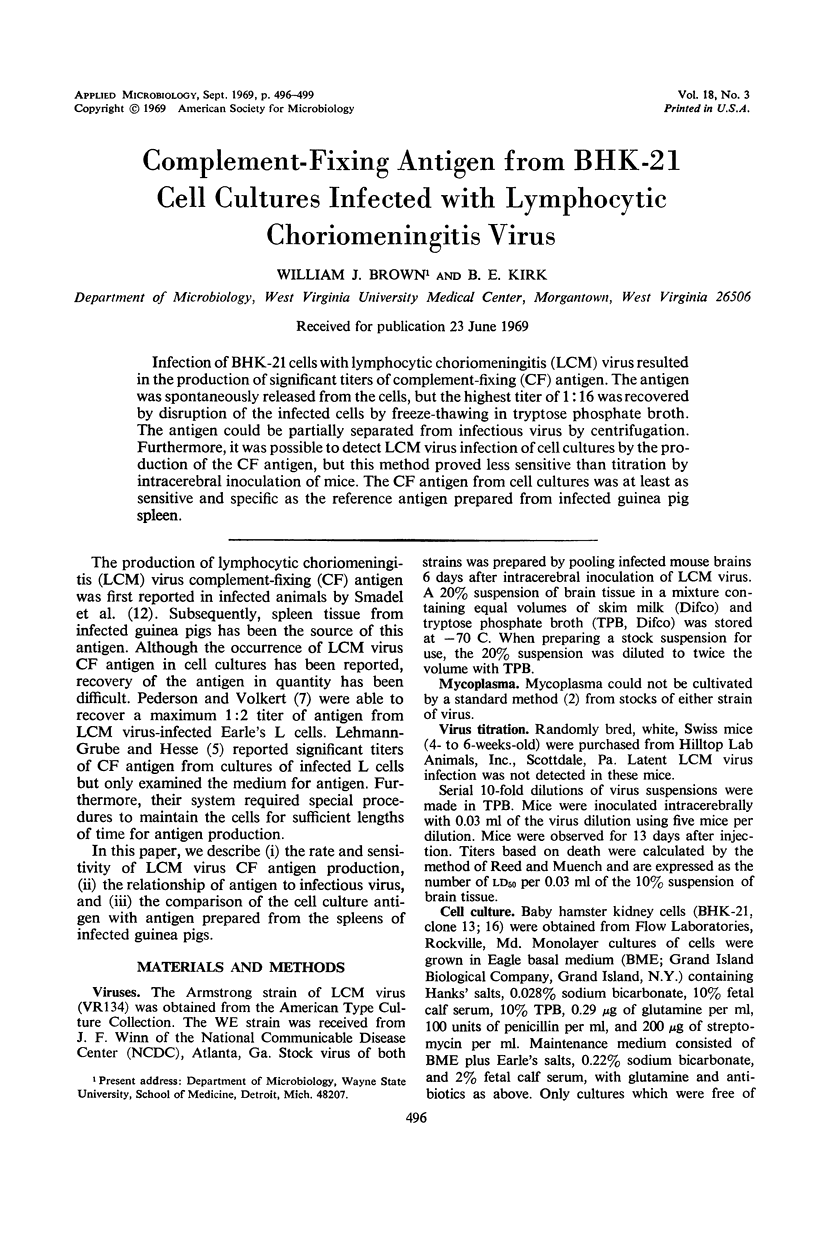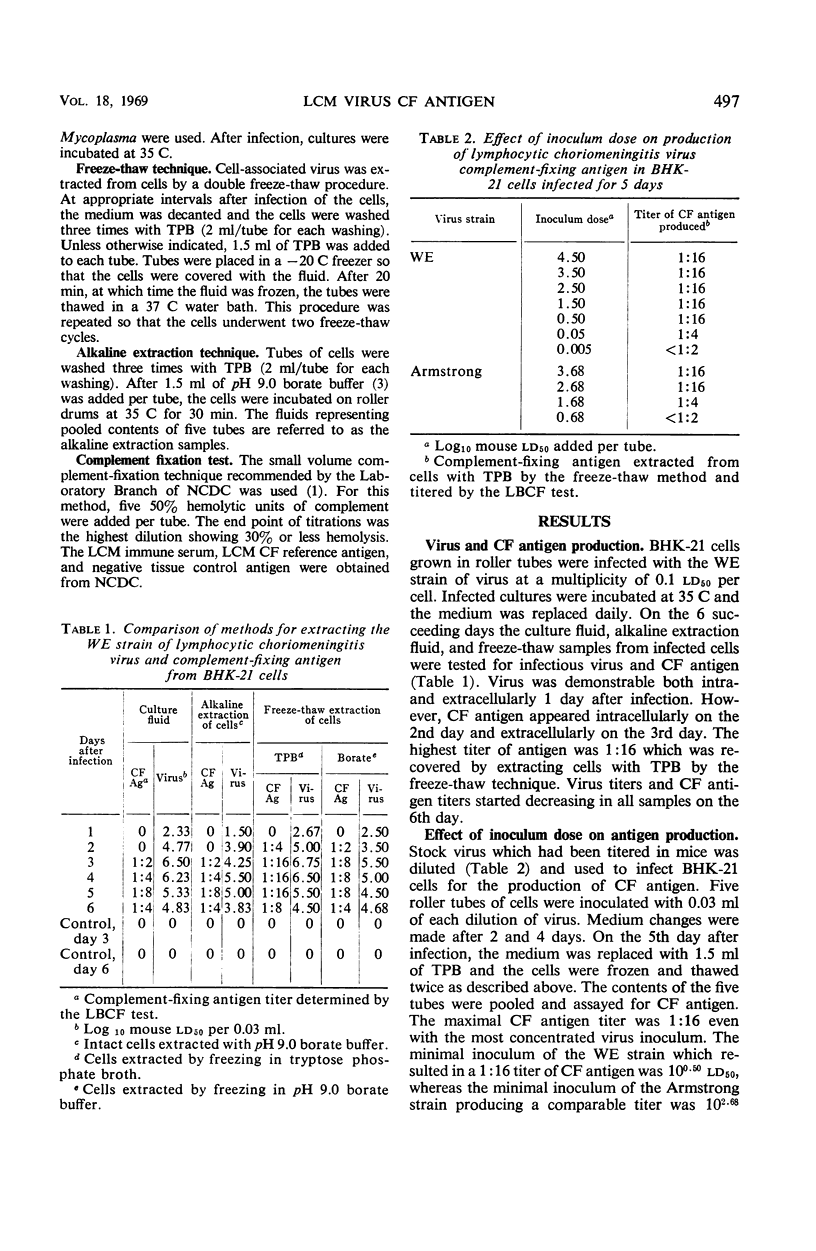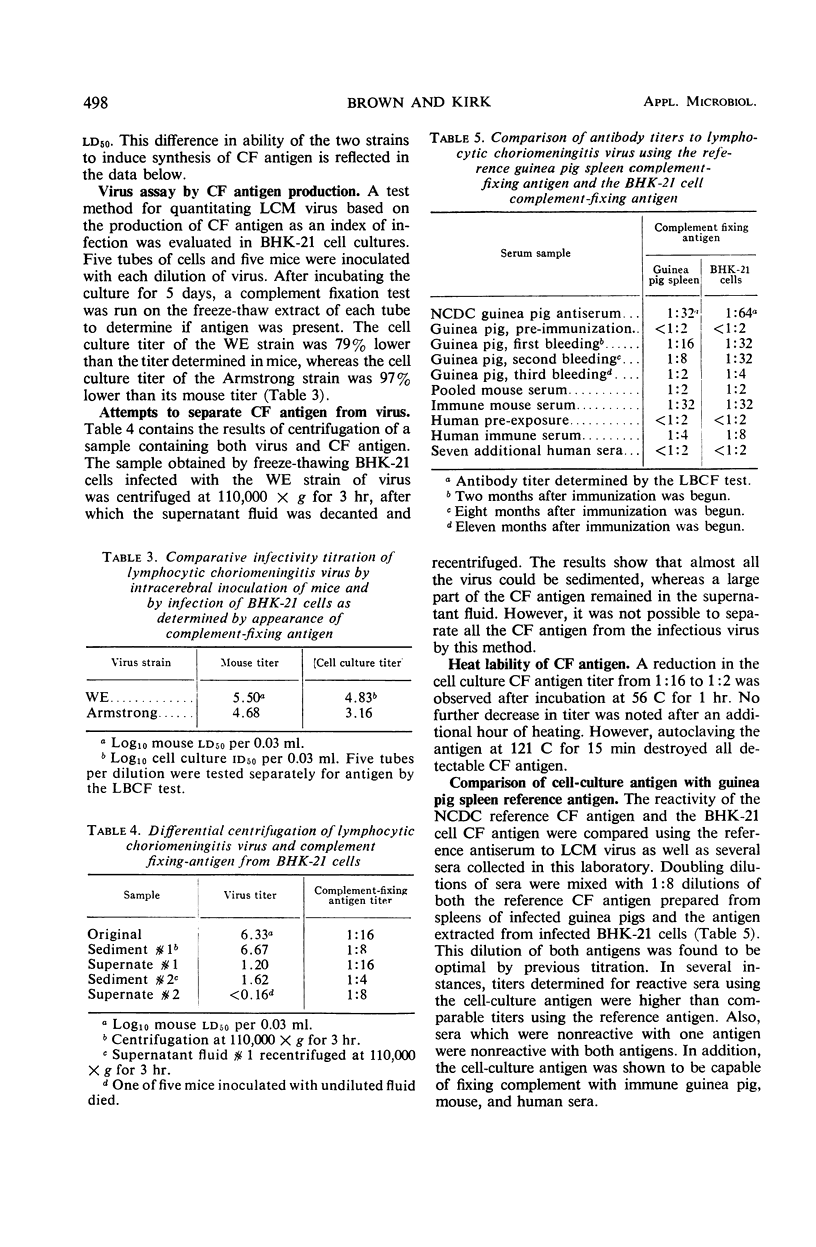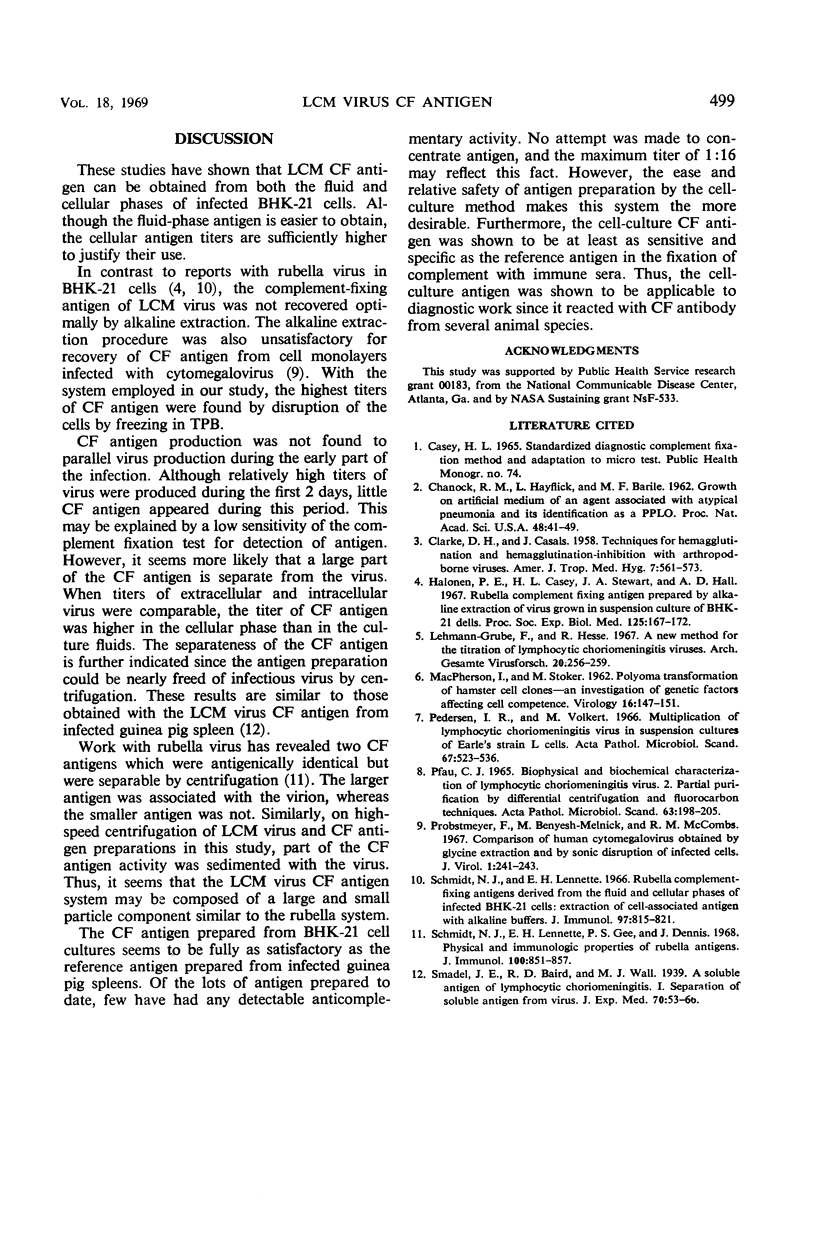Abstract
Infection of BHK-21 cells with lymphocytic choriomeningitis (LCM) virus resulted in the production of significant titers of complement-fixing (CF) antigen. The antigen was spontaneously released from the cells, but the highest titer of 1:16 was recovered by disruption of the infected cells by freeze-thawing in tryptose phosphate broth. The antigen could be partially separated from infectious virus by centrifugation. Furthermore, it was possible to detect LCM virus infection of cell cultures by the production of the CF antigen, but this method proved less sensitive than titration by intracerebral inoculation of mice. The CF antigen from cell cultures was at least as sensitive and specific as the reference antigen prepared from infected guinea pig spleen.
Full text
PDF



Selected References
These references are in PubMed. This may not be the complete list of references from this article.
- CHANOCK R. M., HAYFLICK L., BARILE M. F. Growth on artificial medium of an agent associated with atypical pneumonia and its identification as a PPLO. Proc Natl Acad Sci U S A. 1962 Jan 15;48:41–49. doi: 10.1073/pnas.48.1.41. [DOI] [PMC free article] [PubMed] [Google Scholar]
- CLARKE D. H., CASALS J. Techniques for hemagglutination and hemagglutination-inhibition with arthropod-borne viruses. Am J Trop Med Hyg. 1958 Sep;7(5):561–573. doi: 10.4269/ajtmh.1958.7.561. [DOI] [PubMed] [Google Scholar]
- Halonen P. D., Casey H. L., Stewart J. A., Hall A. D. Rubella complement fixing antigen prepared by alkaline extraction of virus grown in suspension culture of BHK-211 cells. Proc Soc Exp Biol Med. 1967 May;125(1):167–172. doi: 10.3181/00379727-125-32039. [DOI] [PubMed] [Google Scholar]
- Lehmann-Grube F., Hesse R. A new method for the titration of lymphocytic choriomeningitis viruses. Arch Gesamte Virusforsch. 1967;20(2):256–259. doi: 10.1007/BF01241280. [DOI] [PubMed] [Google Scholar]
- MACPHERSON I., STOKER M. Polyoma transformation of hamster cell clones--an investigation of genetic factors affecting cell competence. Virology. 1962 Feb;16:147–151. doi: 10.1016/0042-6822(62)90290-8. [DOI] [PubMed] [Google Scholar]
- PFAU C. J. BIOPHYSICAL AND BIOCHEMICAL CHARACTERIZATION OF LYMPHOCYTIC CHORIOMENINGITIS VIRUS. 2. PARTIAL PURIFICATION BY DIFFERENTIAL CENTRIFUGATION AND FLUOROCARBON TECHNIQUES. Acta Pathol Microbiol Scand. 1965;63:198–205. doi: 10.1111/apm.1965.63.2.198. [DOI] [PubMed] [Google Scholar]
- Pedersen I. R., Volkert M. Multiplication of lymphocytic choriomeningitis virus in suspension cultures of Earle's strain L cells. Acta Pathol Microbiol Scand. 1966;67(4):523–536. doi: 10.1111/apm.1966.67.4.523. [DOI] [PubMed] [Google Scholar]
- Probstmeyer F., Benyesh-Melnick M., McCombs R. M. Comparison of human cytomegalovirus obtained by glycine extraction and by sonic disruption of infected cells. J Virol. 1967 Feb;1(1):241–243. doi: 10.1128/jvi.1.1.241-243.1967. [DOI] [PMC free article] [PubMed] [Google Scholar]
- Schmidt N. J., Lennette E. H., Gee P. S., Dennis J. Physical and immunologic properties of rubella antigens. J Immunol. 1968 Apr;100(4):851–857. [PubMed] [Google Scholar]
- Schmidt N. J., Lennette E. H. Rubella complement-fixing antigens derived from the fluid and cellular phases of infected BHK-21 cells: extraction of cell-associated antigen with alkaline buffers. J Immunol. 1966 Dec;97(6):815–821. [PubMed] [Google Scholar]


